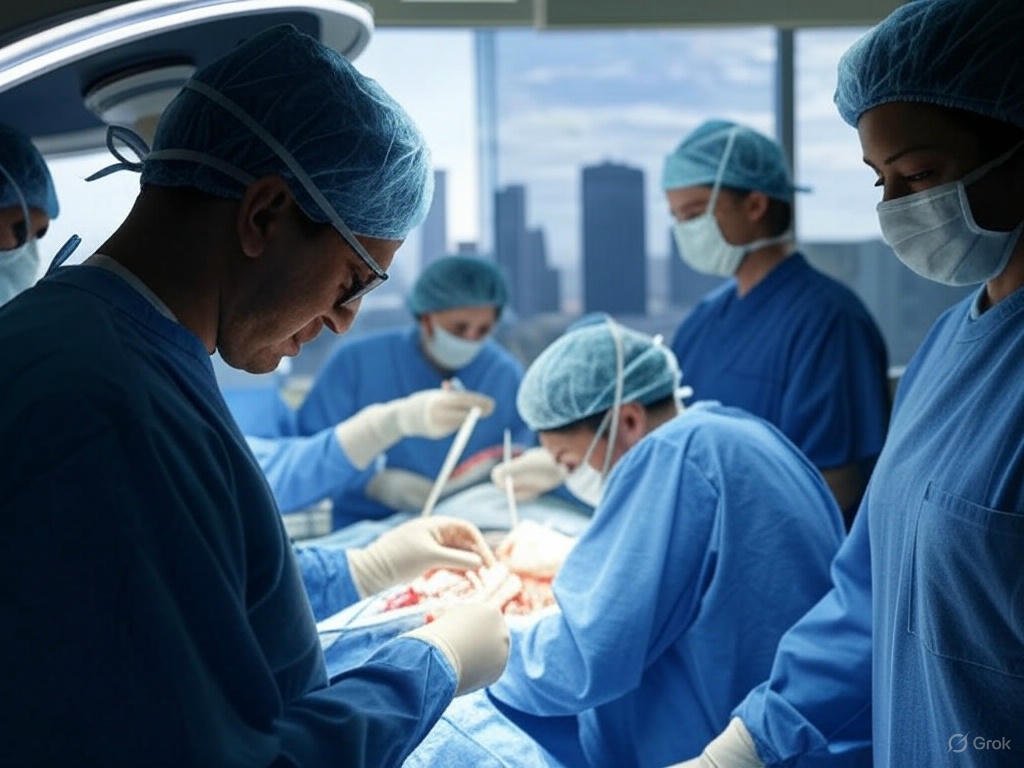Spinal implants have become indispensable in modern surgery, addressing debilitating conditions like degenerative disc disease, spinal stenosis, and trauma by stabilizing the spine and promoting fusion. Innovasis, a Salt Lake City-based medical device company, has emerged as a leader in this field, pioneering bioactive implant technologies that enhance surgical outcomes. With a focus on hydroxyapatite (HA)-infused PEEK materials, Innovasis products are designed to mimic human bone, fostering faster and more reliable fusion. Since its founding in 2006, the company has prioritized innovation while navigating challenges, including a $12 million settlement in 2024 for alleged kickback violations. Following this, Innovasis has doubled down on compliance, ensuring ethical practices while continuing to advance spine care. For more on the lawsuit, see our detailed article. This piece delves into Innovasis’s cutting-edge products and their impact on spinal surgery.
Overview of Innovasis Products
Innovasis offers a comprehensive portfolio of spinal implants and instruments tailored for fusion surgeries across cervical, thoracic, and lumbar regions. Their product line addresses major spinal pathologies, including deformities, degenerative conditions, trauma, and tumors, which can cause severe pain or paralysis. At the core of Innovasis’s offerings are their bioactive implants, particularly those utilizing PEEK-OPTIMA HA Enhanced polymer, which integrates hydroxyapatite (HA) throughout the implant to promote bone apposition. Products like the HAcancellous™ PEEK-C and TxHA™ interbody devices exemplify this technology, designed to enhance osseointegration and fusion rates. Innovasis also provides titanium alloy cages, such as AxTiHA and TxTiHA, featuring up to 66% porosity for better bone ingrowth. Beyond implants, Innovasis develops instrumentation like the TruView® Lateral Access System, supporting minimally invasive procedures. Their commitment to quality is backed by the BioBase® Data Registry, which tracks outcomes to ensure clinical efficacy and patient safety.
Key Product Highlights
Cervical Plates
Innovasis’s cervical plates, notably the Opteryx Cervical Plate System, are engineered for anterior cervical fixation from C2 to C7. Cleared by the FDA in 2006, the Opteryx system stabilizes the cervical spine in cases of degenerative disc disease, trauma, deformities, and tumors. Its design includes a self-locking mechanism, eliminating the need for additional steps during surgery, and offers 1 to 4 level plates with apertures for easy graft visualization. The system also supports variable, fixed, and self-tapping screws, ensuring versatility and stability during fusion. This focus on secure fixation reduces the risk of implant migration, a critical factor in achieving successful long-term outcomes for patients undergoing cervical fusion.
Opteryx System
The Opteryx Cervical Plate System stands out for its compatibility with minimally invasive techniques, a growing preference in spinal surgery due to reduced recovery times and lower complication rates. Its no-step locking mechanism streamlines implantation, while the design facilitates clear visualization of the graft site, allowing surgeons to monitor fusion progress. The system’s adaptability to various screw types and plate levels makes it a versatile tool for addressing complex cervical pathologies, such as spondylolisthesis and pseudoarthrosis, ensuring precise alignment and stability during the fusion process. This contributes to improved patient recovery and reduced postoperative complications.
G1 Implants
Innovasis’s G1 implants, including devices like the HAcancellous™ PEEK-C and LxHA®, leverage bioactive properties to enhance spinal fusion. The HAcancellous™ PEEK-C, cleared by the FDA in 2022, is a porous cervical interbody fusion system made from PEEK-OPTIMA HA Enhanced polymer. Its interconnected pores, designed with Pore Matrix™ Technology, mimic cancellous bone, promoting cell signaling and bone ingrowth. Hydroxyapatite is fully integrated throughout the implant, accelerating osseointegration. The LxHA®, a lateral interbody device, similarly integrates HA to support fusion in the lumbar spine (L2-S1), offering a modulus close to human bone to reduce stress shielding. These bioactive features make G1 implants highly effective for complex spinal conditions.
Registry Data
The BioBase® Data Registry, a cornerstone of Innovasis’s commitment to evidence-based innovation, has collected data from over 3,800 procedures as of 2023. This multicenter, observational repository tracks patient-reported outcomes, fusion rates, and quality-of-life metrics for up to 24 months. A 2024 study published in the Global Spine Journal by Kazarian et al. at the Hospital for Special Surgery reported a 96% fusion success rate across anterior, posterior, and lateral lumbar interbody fusion procedures using HA-infused PEEK and titanium alloy cages. The study also noted a 77% reduction in segmental range of motion at the index level, indicating effective stabilization, alongside high patient satisfaction scores. This data underscores the clinical reliability of Innovasis products.
Research and Development
Innovasis’s research and development efforts are centered at its state-of-the-art facility in Salt Lake City, where innovation in spinal implant technology thrives. The company collaborates closely with surgeons to design implants that meet real-world surgical needs, ensuring practicality and efficacy. This collaborative approach is conducted under strict compliance protocols, especially following the 2019 audit and 2024 settlement, to maintain ethical standards. Innovasis’s R&D focuses on advancing bioactive materials, as seen in their partnership with Pore Matrix to develop Porous HA PEEK, a technology that mimics cancellous bone permeability to enhance fusion. Their work has led to multiple FDA clearances, including the first standalone ALIF system made from PEEK-OPTIMA HA Enhanced in 2017. By investing in rigorous clinical research and leveraging the BioBase® Registry, Innovasis ensures that its products are both innovative and grounded in real-world outcomes, setting new benchmarks in spinal care.
Impact on Patient Outcomes
Innovasis’s implants significantly improve patient recovery and surgical success by promoting faster and more reliable spinal fusion. The HA-infused PEEK implants, such as HAcancellous™ PEEK-C and TxHA™, enhance bone apposition, reducing the time needed for fusion compared to traditional materials like titanium, which showed fusion rates of 47-93% versus PEEK-OPTIMA’s 88-100% in comparative studies. Patients experience reduced postoperative pain and improved stability, as evidenced by the BioBase® Registry’s 96% fusion success rate and significant reductions in segmental motion. Clinical metrics like the Neck Disability Index and visual analog scales for pain further confirm improved quality of life, with patients reporting high satisfaction. By mimicking the modulus of human bone, Innovasis implants also minimize stress shielding, ensuring long-term spinal health and reducing the likelihood of adjacent segment degeneration.
Conclusion
Innovasis continues to lead spinal implant innovation with its bioactive technologies, from HA-infused PEEK to the versatile Opteryx Cervical Plate System. Their G1 implants and extensive BioBase® Registry data highlight a commitment to improving patient outcomes through evidence-based solutions. Despite past legal challenges, Innovasis’s focus on compliance and innovation ensures its position at the forefront of spine care. To learn more about their groundbreaking products or the 2024 lawsuit, explore our detailed resources on Innovasis’s journey and contributions to spinal surgery.





